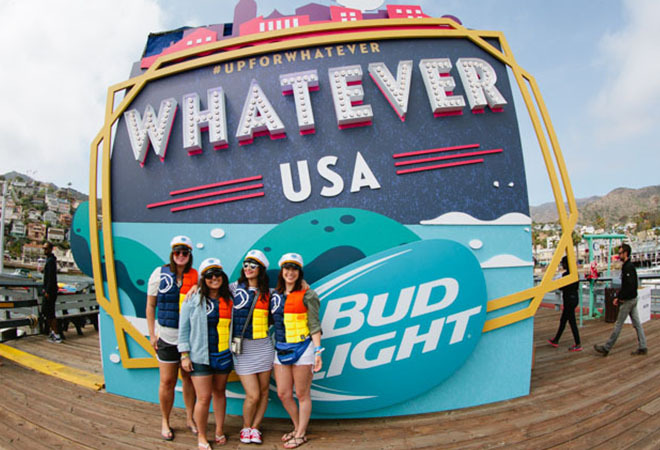
More and more often, brands are challenging their OOH partners to drive results for PR and social media. The industry has had some spotty success but hasn’t found the answer until now: experiential.
In April of 2015 I left a creative agency in Los Angeles, where I was a partner and Chief Experiential Officer, to head up to Portland and launch an experiential group for OOH specialist Billups.
Formalizing an experiential group is a logical and progressive step for an OOH media company looking to evolve and expand its role in the marketing mix for its clients. The evolution from bulletins and bus shelters to digital screens and interactive displays has been organic, and now adding a human touch and deeper engagement with an experiential component is the logical next step.
Simply put: offline experiences that resonate drive online conversations. OOH has every right to be creating these offline experiences.
It’s time for anyone trying to start a social conversation to look at experiential as a key driver for creating meaningful online conversations.
In the past we have tried to “amplify” (or justify in some cases) our experiential spend through social media. Now we start with social as the goal and look to experiential as one of the most effective ways to start earned social media conversations.
OLD POV: Every effective, dependable experiential campaign must include social amplification.
NEW POV: Every social campaign should utilize experiential to start earned conversations in social channels.
Experiential is already working for PR and branded content.
PR and branded content channels are enjoying success in the experiential space (for brands and agencies) for two primary reasons:
- Clear ROI – PR agencies use experiential as a driver. They create experiences that generate press, and then measure the media results using the universally accepted ROI calculations for PR. Nobody has to quantify the value of a face-to-face engagement with cross channel amplification. The same applies for branded content.
- It works…really well! Time Warner Cable was able to create a Super Bowl experience that attracted 25,000 consumers to its event. Not impressed yet? This resulted in 1.5 billion earned media impressions. Turner sent out 65 experiential influencer kits to promote the launch of Falling Skies and earned 220 million media impressions. Red Bull’s Stratos jump has over 55 million views worldwide. Microsoft turned 750,000 demos of its Windows Phone 8 into over 350 million content views. The list goes on.
Social is Next
Brands have embraced social. They are committed. The budgets are there. Metrics and measurement tools are readily available and embraced by CMOs. But does it align with experiential? Absolutely. Here’s why:
- Social ROI is simple and universal. It’s easy to quantify the value of an engagement if the KPI is an online conversation.
- Social listening is key. Social listening tools, in the greater scheme of marketing analytics, are among the most cost efficient. You can measure social impact without requiring share tools or hashtags (though they certainly can help). You can measure historical data, how you’re influencing the conversation during your campaign, and what the lasting effects are. The data is real time.
- Earned beats paid. 3% of people trust promoted posts, 90% of people trust recommendations from friends. An earned impression is, on average, 3.2x more valuable to a brand than paid impressions.
Social Brief + Experiential Execution = SUCCESS
Just ask Bud Light. Their 2014 #UpForWhatever campaign flew 1,000 millennials to Whatever USA for a weekend of nonstop experiences. These 1,000 attendees created 37,000 pieces of content that created 1.4 million earned millennial engagements and over 580 million impressions.
Rules of Engagement:
- Activate on the shared strand of DNA between the audience and the brand. Ask two simple questions:
Could we create this same experience for another brand?
2. Would this experience work if we changed the audience?
If you can answer yes to either of those questions, you have failed. If you do it right you won’t need share tools or rewards. Consumers will engage and share organically. - You shouldn’t have to bribe the audience. Rewards for participating are great as long as they aren’t compensating for a not-so-great experience. You can’t phone it in with a lame activation and think it’s ok to make up for it with a reward for participating. You might get a line at your event, but that’s a win for the bribe, not the brand. Ask yourself this question: Are consumers waiting in line because the experience is awesome or the participation reward is awesome?
- Be authentic. Consumers will sniff out a fraud a mile away.
- Protect the user experience. This is so important that we have people in our experiential group whose full time job is “protect the user experience.” You need to put yourself in the consumer’s shoes, identify how the activation would resonate, and fight to keep that from getting watered down by brand mandatories and executional limitations.
- Don’t ask for too much.If experiential commits to using social ROI, we can let go of some of the obtrusive activities that are often required of participants so we can measure event effectiveness. Do you want your consumer’s experience to end with meeting their favorite NFL player or with filling out your survey? If you have done it right, you can trust they will share their experience and you can measure your success online instead of at the event.
So What’s the Takeaway?
Social media managers need to include experiential marketing in the media mix. Consumers have been sharing offline experiences online since the invention of social media. Embrace it. And the ROI rocks. It is simple, universal and can outperform a lot of other social drivers.
Download the PDF
Published: January 20, 2016